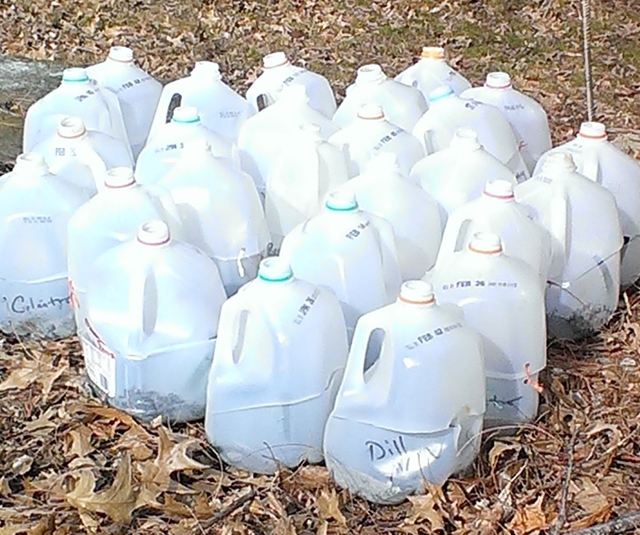Azomite for the Home Garden
One of the most important things a gardener can do to have a successful harvest season is to make sure your soil is full of every nutrient your plants will need.
Gardeners seem to be much more familiar with N-P-K (nitrogen, phosphorus, potassium) than they are micro nutrients and trace minerals. Micro nutrients and trace minerals are very important to build soil to attain healthier crops.
That's where Azomite comes in. Azomite can help make sure that your plants thrive and that you have a successful growing season.
So What is Azomite?
The name Azomite is a mnemonic meaning “A to Z of Minerals Including Trace Elements”.
Azomite is mineralized, compacted volcanic ash (organically mixed with sea water) which contains a unique blend of minerals and trace elements, including Boron, Calcium, Chlorine, Cobalt, Copper, Iron, Magnesium, Molybdenum, Nitrogen, Phosphorous, Potassium, Silicon, Sodium, Sulfur, and Zinc.
Some Benefits of Azomite
- Grow stronger plants that produce larger fruits and vegetables.
- Produce more fruits and vegetables.
- Re-mineralize nutrient-depleted soils.
- Doesn't throw off the PH of the soil.
- Cannot burn plants if used too much.
- Is odorless and organic.
- Won't restrict water penetration or aeration.
- Will not alter the pH of the soil.
- Helps plants be more resistant to disease.
Forms of Azomite
Azomite comes in the following grades; ultrafine, micronized, field grade, granulated, and pelletized. Any of these grades can be used in the home garden.
Top dressing generally is the easiest way to apply Azomite, mixing it into the top of the soil and watering in.
Azomite for Fruit Trees
Azomite combats citrus decline and creates vigorous plants to help resist disease and pests, increase yields, accelerates growth and produce sweeter fruits.
Sprinkle three teaspoons every ten feet around the drip line. Apply every three months.
Azomite For Vegetable Plants
For planting out/transplanting seedlings.
Add two tablespoons of Azomite per seedling.
Add Azomite at a rate of 1/4th cup per plant every other month through the growing season. Azomite should be applied with humus, manures, compost or other fertilizers to provide needed levels of NPK.
Azomite has been reported to be of particular benefit to potato, tomato, onion and garlic crops.
Mix one half teaspoon per inch of pot diameter with potting soil before planting. Then apply one half to one teaspoon every three months to the soil surface of the soil and water in.
~~~~~~~~~~~~~~~~~~~~~~~~~~~~~~~~~~~~
Adding the needed micro nutrients and trace elements to your soil can take your gardening success to the next level making sure that your plants thrive and that you have a successful growing season!
~~~~~~~~~~~~~~~~~~~~~~~~~~~~~~~~~~~

Have You Tried Winter Sowing??
If you haven't tried winter sowing, you're in for a treat. This method is especially good for sowing herbs. Winter sowing is basically sowing seeds in the bottom of milk jugs in the winter, setting the milk jugs outside for the winter and leaving them there until the seeds germinate in the Spring.
For our article containing detailed information about Winter Sowing, click here.
To watch our 30 minute video on how to winter sow, click here.
Where to go next!








.png)






No comments:
Post a Comment
Note: Only a member of this blog may post a comment.